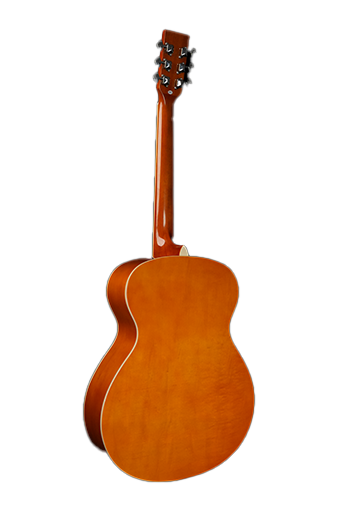
How to Inspect a Guitar factory in China
Inspecting a guitar factory in China requires careful planning, attention to detail, and a structured approach to ensure product quality, ethical manufacturing practices, and compliance with international standards. Whether you are a retailer, distributor, or brand owner, conducting a thorough factory inspection is crucial before placing an order. Below is a comprehensive guide on how to inspect a guitar factory in China effectively.
---
1. Pre-Inspection Preparation
Before visiting the factory, gather as much information as possible to streamline the inspection process:
A. Research the Factory
- Check the factory’s background, including years in operation, certifications (e.g., ISO, FSC for wood sourcing), and client references.
- Verify if the factory specializes in acoustic, electric, or Classical guitars, as expertise varies.
- Look for online reviews or industry feedback about their reputation.
B. Define Your Requirements
- Determine your quality standards (e.g., materials, craftsmanship, finish).
- Prepare a checklist covering key inspection points (discussed later).
- Clarify production capacity, lead times, and minimum order quantities (MOQs).
C. Schedule the Visit
- Contact the factory to arrange an appointment, ensuring key personnel (e.g., production manager, QC team) are available.
- Avoid peak production seasons (e.g., before Chinese New Year) when factories may be overloaded.
---
2. On-Site Inspection Process
Once at the factory, follow a systematic approach to evaluate different aspects:
A. Factory Overview
1. Facility Tour
- Observe the general cleanliness, organization, and workflow efficiency.
- Check if workstations are well-lit and ergonomically designed for workers.
- Look for proper storage of raw materials (wood, hardware) to prevent warping or damage.
2. Production Capacity
- Assess machinery (CNC routers, laser cutters, spray booths) and their maintenance status.
- Verify the number of production lines and workers to gauge output capability.
3. Workforce Conditions
- Ensure fair labor practices (no child labor, reasonable working hours).
- Check safety measures (ventilation in painting areas, protective gear for workers).
B. Material Quality Inspection
1. Wood Selection
- Confirm the type of wood used (e.g., spruce, mahogany, rosewood) matches your specifications.
- Check for proper drying and aging of wood to prevent future warping or cracking.
2. Hardware & Components
- Inspect tuners, bridges, pickups, and frets for durability and precision.
- Verify if hardware is sourced from reputable suppliers (e.g., branded tuners vs. generic).
C. Production Process Evaluation
1. Neck Construction
- Check neck joint stability (dovetail, bolt-on, or set-neck).
- Ensure proper truss rod installation for adjustability.
2. Body Shaping & Finishing
- Examine sanding quality—surfaces should be smooth with no visible tool marks.
- Assess paint and finish consistency (no drips, bubbles, or uneven coating).
3. Fretwork & Setup
- Test fret leveling—no sharp edges, and notes should ring clearly without buzzing.
- Verify proper string action and intonation setup.
D. Quality Control (QC) Procedures
1. In-Process QC
- Observe if there are checkpoints at each production stage (e.g., bracing inspection before closing the soundbox).
- Ask about defect rates and how issues are resolved.
2. Final QC
- Review how finished guitars are tested (e.g., playability, electronic testing for Electric guitars).
- Check if the factory provides QC reports or third-party inspections.
E. Compliance & Documentation
1. Certifications
- Request proof of certifications (e.g., CITES for rosewood, REACH for finishes).
- Ensure compliance with international regulations (e.g., EU/US safety standards).
2. Sample Testing
- Play-test multiple samples to evaluate tone, sustain, and build consistency.
- Compare samples against your reference guitar (if available).
---
3. Post-Inspection Follow-Up
After the visit, consolidate findings and take necessary actions:
A. Report & Analysis
- Document observations with photos/videos and detailed notes.
- Compare the factory against competitors in terms of quality, pricing, and reliability.
B. Negotiation & Contract
- Address any red flags (e.g., poor QC) and request improvements before finalizing orders.
- Clarify warranty terms, defect liability, and after-sales support.
C. Trial Order
- Start with a small order to verify consistency before scaling up.
- Monitor production updates and request pre-shipment inspections.
---
4. Common Red Flags to Watch For
- Poor Material Storage: Wood stored in humid/damp conditions risks warping.
- Lack of QC Records: Factories without documented inspections may have inconsistent quality.
- Overpromising: Be cautious if the factory claims unrealistically fast lead times or low MOQs.
- Hidden Workshops: Some factories subcontract work without disclosure, leading to quality drops.
---
Conclusion
Inspecting a guitar factory in China requires a balance of technical knowledge and due diligence. By thoroughly evaluating materials, production processes, and QC systems, you can minimize risks and establish a reliable supply chain. Always prioritize transparency, ethical practices, and long-term partnerships over short-term cost savings. With careful planning and execution, you can source high-quality guitars that meet your brand’s standards.
Would you like additional details on specific guitar types (e.g., acoustic vs. electric) or deeper insights into material certifications? Let me know how I can further assist!

Copyright © 2003-2025 Longsheng Musical Instrument Co., Ltd. Powered by:Lucky Cloud Network Technology All rights reserved.
SitemapThis website uses cookies to ensure you get the best experience on our website.
Comment
(0)